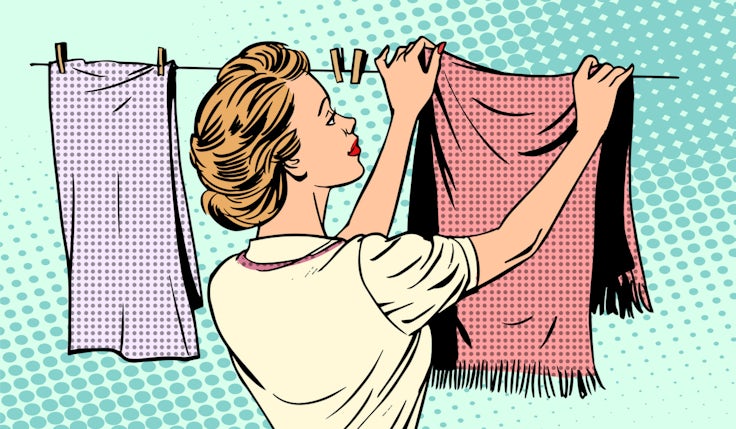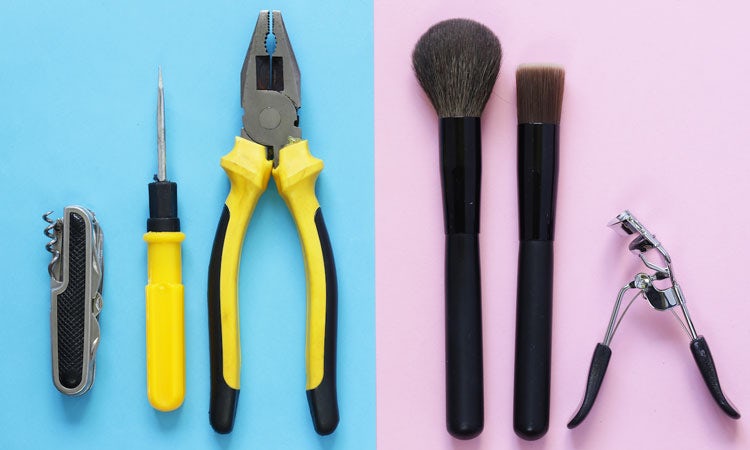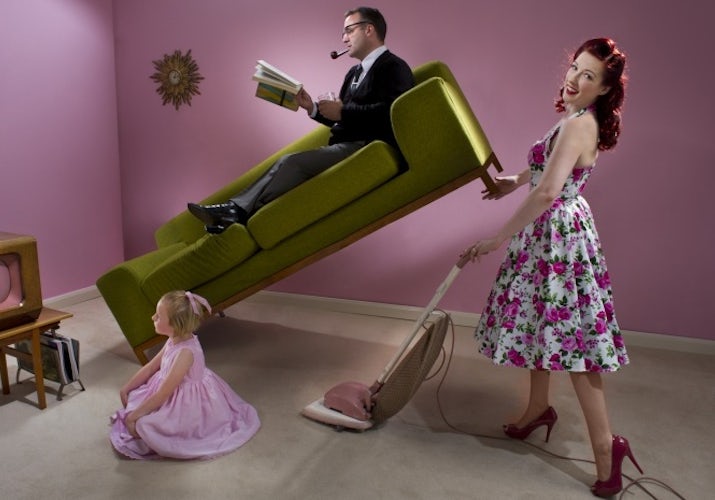‘Sneaky sexism’ is on the rise in advertising
Much has been said about the need to eradicate out-of-date portrayals of women from advertising yet the problem is far from fixed, with new research laying bare the extent of the problem.
 Despite widespread criticism, marketing is still inherently sexist. All too often brands fall back on the stereotypical idea of women – the young, thin blonde, who is passive and agreeable and whose main ambition in life is to get married and have children.
Despite widespread criticism, marketing is still inherently sexist. All too often brands fall back on the stereotypical idea of women – the young, thin blonde, who is passive and agreeable and whose main ambition in life is to get married and have children.
While much has been done to eliminate these out-of-date ideals, they are still very much at play, although often now in a more subtle way.
The tide has also shifted from focusing on how women need to fix their appearance to how they can improve their behaviour and attitude which, while often well-intentioned, can be equally damaging.
These are the findings of extensive research carried out over 15 years to assess the state of marketing to women, which forms the basis of new book Brandsplaining: Why marketing is still sexist and how to fix it.
A quarter of all ads that feature women present them in a sexualised way and 85% of the women shown are slim, pretty, usually white, with clear skin and shiny hair.
However, part of the problem lies in the fact that just one in 10 ads feature a woman, despite women being responsible for three quarters of all consumer purchases.
It’s the same trick of saying you need to change but it’s moved from physical appearance to behaviour and attitude, which is just as damaging.
Philippa Roberts
When women are shown in advertising it is often in a negative light, with half of the ads studied featuring explicit criticism or implied criticism about their appearance or their failure to look after their house or family.
This perfectionist narrative implies women are failing to live up to expectations, according to the book’s authors Jane Cunningham and Philippa Roberts who run PLHresearch.
“Implicit within the perfectionist narrative is a judgement that is saying to women, what you are is not enough and you need to change the way you look, the way you behave, the way you keep your house or the way you look after your family in order to meet an ideal. And that ideal is invariably at some level a male-pleasing ideal,” explains Roberts.
“We describe it in the book as the ‘good girl’ phenomenon, which is that women at all ages have been told they need to be good, they need to be pleasing, they need to be pretty, they need to be passive. Those ideals have been held up as what women should be working towards. The role of brands is to help them achieve that and implicit within all of that is the criticism that says what you are is not enough.”
Sneaky sexism
In order to understand the extent of the problem, Cunningham and Roberts analysed 120 UK and US brand ads, their websites, packaging and social media. They also surveyed 14,000 women in 14 countries across four continents to understand their attitudes and beliefs about marketing and advertising.
Much has been done to help reduce the level of sexism in advertising, with initiatives such as the Unstereotype Alliance making some headway. And while people might assume this ‘good girl’ ideal is now less prevalent in marketing, the research reveals it is still very much present. But the way in which it manifests is more “sneaky” than it once was.
Unilever pushes for more ‘progressive’ portrayals of people in advertising
“Perfectionist narratives seem to be done now in a way that is much more subtle and therefore a bit sneaky, but they’re still very strong because they are the factory settings on which so much marketing was originally based,” adds Roberts.
This sneaky sexism is all in the subtext. “There are a lot of brands that are ticking the boxes of doing the right thing, but actually the extent of the genuine changes they’ve made has been really rather slight,” she says.
“The classic example is that the old school pink and blue has been replaced with something that says floral, decorative and candy colours are still for her and strong, bold, powerful colours are for him. So effectively it’s saying entirely the same thing, it’s just saying it in a coded way.”
The authors suggest that corporate feminism, even if well-intentioned, has been a distraction and camouflaged the problem. Because telling women to be braver, bolder, more outspoken or stronger is still being critical, but now the onus is on changing their character rather than their appearance.
“It’s the same trick of saying you need to change but it’s moved from physical appearance to behaviour and attitude, which is just as damaging,” says Roberts.
Cunningham suggests part of the problem lies in the fact the power has switched too much in the favour of brands, which rather than being there to serve consumers have assumed the position of “master”, telling women what and how they should be.
 “The underlying message of telling women how they should act, what they should look like – the subtext is ‘we’re in charge and you’re on receive’, she explains.
“The underlying message of telling women how they should act, what they should look like – the subtext is ‘we’re in charge and you’re on receive’, she explains.
“You see women presented in advertising very frequently as passive, not speaking – they speak seven times less than men – they’re very rarely funny but they’re always laughing and cheerful and pleasing. You could say, ‘well, what’s the problem with having a woman look happy in an ad?’ But when you join all the dots and add up all the different ways women are presented, the end consequence is an image of women as silent, passive and very happy to be in that position, all of which is sneaky and amounts to sexism.”
The vast majority of women surveyed as part of the study agree that advertising as it stands is not only unrepresentative, but damaging.
Three-quarters worry the way models look in advertising is making women feel bad about themselves and can be harmful. Indeed, 63% believe advertising is partly to blame for eating disorders.
“While social media has been a force for good for a lot of women in a lot of ways, it has also provided brands with a channel where they can go unnoticed and continue to play out these old ideas of what women should be,” says Cunningham.
“If you’re a younger woman and you’re consuming those channels the number of messages you’re getting on a daily basis that are telling you this is what good looks like and this is how to be perfect is even greater than we would have experienced in our younger years. And we all know the consequences. There’s a huge issue with anxiety, eating disorders and self harm among young women and young men.”
There’s a need for brands to face into the reality that the old idea of women’s aspirations and what they want out of life are redundant.
Jane Cunningham
More than half (59%) of the women surveyed say advertising has an out-dated view of women, with 76% suggesting they mainly see very thin women featured in ads. Women featured in ads also tend to be young, with 68% saying there aren’t enough older women in advertising.
Most women (68%) also do not feel represented in advertising, with the vast majority (81%) saying they want to see all types of women used by brands to promote their goods.
How women want to be seen
Brands need to better understand where women’s heads are today, what’s important to them and what their aspirations are.
Rather than being fixated on marriage and children, the four greatest aspirations women have are to feel comfortable in their own skin, to be financially independent, to be able to make their own decisions in the life and the travel the world.
Likewise, appearance is not what women want to be defined by. The characteristics that women most want to be associated with are intelligence, their relationship with their family and sense of humour. Appearance doesn’t even make the top 10.
Yet women feel society defines them by appearance more than anything, followed by intelligence and their gender.
 In order to fix the problem, Cunningham suggest brands have got to lose the idea that the high point of any woman’s life is to get married and have kids.
In order to fix the problem, Cunningham suggest brands have got to lose the idea that the high point of any woman’s life is to get married and have kids.
“We need to get rid of this notion of the female life being a ‘bell curve’, the idea that the zenith of your life is marriage and children, and everything before that is about preparing to ensure that happens and everything after is just a terrible decline into ageing and greyness,” she says.
“There’s a need for brands to face into the reality that the old idea of women’s aspirations and what they want out of life are redundant. They need to review that and build it into all their thinking and models.”
The authors point to a number of direct-to-consumers brands that are getting it right, including Frida Mom, Girlfriend Collective and Starling Bank. What connects these brands is that their propositions tend to be constructive rather than critical.
“They are very good on the ‘deeds not words’ front. They run their businesses in the same way in which they present them and they tend to pay a lot of attention to women in the supply chain and women as employees, making sure it all begins at home rather than it being a front-of-house thing,” says Roberts.
“Invariably their models are based on much more circular and sustainable principles than the old school, linear growth at any cost.”







